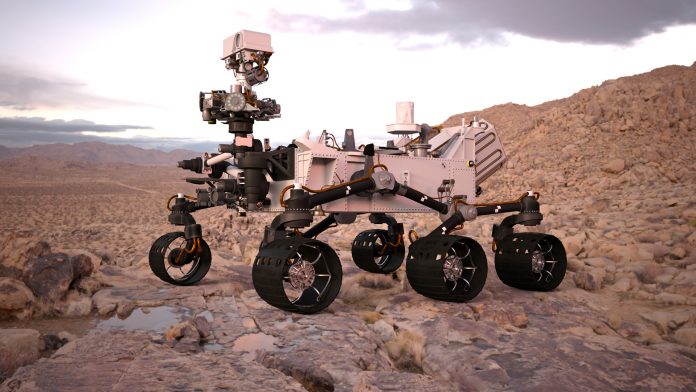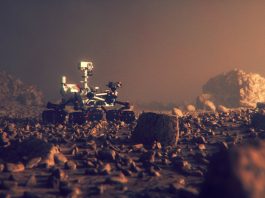A remote Mars rover competition, named the ERC Space and Robotics Event, will begin on 11 September 2020, using a robot management platform to navigate a mobile robot on the largest artificial Martian field on Earth.
The grand finale of the sixth edition of the ERC Space and Robotics Event will take place between 11-13 September 2020. The three-day competition will be accompanied by live transmission and the commentary studio. Experts who agreed to participate in the online programme include: Louise Hamlin, an engineer at JPL NASA, Pete Worden, former Director of NASA Ames Research Center, Maria Antonietta Perino, Director International Network Opportunities Development at Thales Alenia Space Italy, Douglas Terrier, Chief Technologist at NASA and Artemis Westenberg, CEO Explore Mars Europe.
ERC 2020 tasks
The teams, which qualified for the final stage of the competition, will perform two field tasks while navigating a mobile robot on MarsYard. It is the biggest artificial Martian field in the world designed to resemble the Jezero Crater, the exact location of the landing of NASA’s Perseverance rover next year. In the Navigation & Science Task the teams will explore the area and find certain spots marked on the map which they received prior to the competition. Once the participants reach the spots, they will perform simple experiments on the objects they encounter. This way of exploration is called opportunistic rover science and it is broadly used in real-life rover missions. In the Maintenance Task teams will perform repair and service duties at the target machine using a remotely controlled robotic arm equipped with a grasper, two ‘fingers’ and cameras.
In addition to the field tasks, all ERC finalists will also face a presentation task. During a one-on-one online meeting with the jury, they will present technical documentation of their project and discuss challenges that occurred within it.
Innovative platform
To remotely navigate the rover physically located in Poland, the teams will use an innovative remote robot management platform. This system, developed by Freedom Robotics, an American start-up from Silicon Valley, provides users with a set of tools – including cloud computing and a phone app – that allows for remote control of the entire fleet of robots. Each ERC team will receive a script to deploy to the rover for the purpose of collecting and analysing the data it obtains on the MarsYard. Next, using the system’s dashboard, the participants will be able to see in real-time what is happening with the robot after take-off and, if necessary, run a command remotely to change its course or stop it.
While navigating the robot, the teams do not have to rely solely on the platform that is provided for them, they can also upload their own software, including algorithms that will allow the rover to move independently. Full autonomy is the goal in the space and robotics sector and the more autonomous finalists’ projects are, the better they will be rated in the final score.
Agile robots
In previous editions of ERC, the teams were designing and building their own rovers which were later brought with them to Poland for the finale of the competition. This year, due to Covid-19 safety restrictions finalists aren’t able to travel, so the ERC organisers decided to modify the rules and let everybody use the same robot designed by a Polish robotic start-up. The owner of this start-up, Szymon Dzwonczyk, was the leader of the Scorpio team from the Wroclaw University of Technology which, in 2014, won the very first edition of ERC. Six years later, thanks to the Leo rovers built by Szymon, young engineers from all over the world will be able to participate in this year’s competition.
Leo rovers are equipped with a navigation system based on wheel odometry which uses data from motion sensors to estimate how far the rover has travelled and in which direction. Because of IMU (Inertial Measurement Unit), the teams will be able to collect information on the angle of the tilt the rover is under and what kind of acceleration forces affect it. Moreover, participants will have two cameras at their disposal, including a stereovision one that simulates human binocular vision and therefore gives the ability to perceive depth. That will help teams approximate the distance to various checkpoints and obstacles. However, to use that feature, teams need to prepare their own software prior to the competition. If they do not, the only item they will be able to use is the default camera located on the front of the rover.
The remote formula of ERC 2020 allows competitors from all around the world to connect with MarsYard via the remote robot management platform. Sustained and high transfer rate of data is the responsibility of the Poznan Supercomputing and Networking Center (PSNC) as well as the High-Performance Computing Center and the national broadband network PIONIER. It is an internationally known node of the European Research Area in the field of IT infrastructure of science and an important R&D center in the field of information and communication technologies (ICT).









